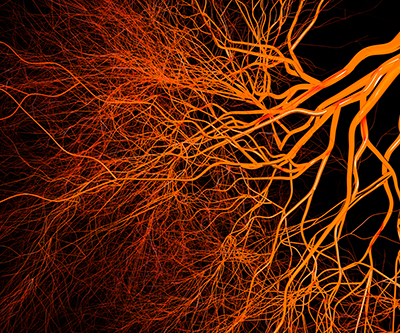
Blood vessels are responsible for transporting oxygen throughout the body. Malformations in blood vessels are rare diseases that can lead to growth differences—overgrowth and undergrowth—and other health problems, including pain. However, people with these vascular conditions tend to have hard-to-detect genetic causes because the mutation only occurs in some tissues and not in the whole body. This occurrence is also called genetic mosaicism.
A recent study from the Sheppard Lab identified a mosaic, pathogenic variant in the gene AKT3 as the cause of a vascular malformation in a young boy. The variant resulted in atypical development in capillaries, which are the smallest blood vessels in the body, and an undergrowth condition. The boy’s lower left leg was thinner than the right leg, and he also experienced knee and leg pain. His development was otherwise normal, and physical therapy improved his gait. In contrast, two other previously reported patients with the same mosaic variant in AKT3 had more serious symptoms, including changes in brain development. The findings underscore the wide variety of symptoms observed in mosaic conditions, and the need to study the underlying mechanisms of AKT3 signaling as it relates to blood vessel formation and function.
Learn more about the Developmental Endocrinology, Metabolism, Genetics & Endocrine Oncology Affinity Group:
https://www.nichd.nih.gov/about/org/dir/affinity-groups/DEMG-EO
 BACK TO TOP
BACK TO TOP